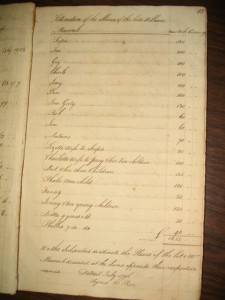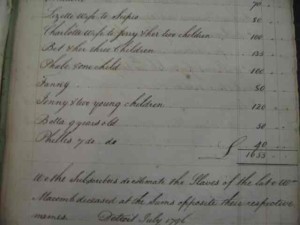By Joel Thurtell
During the long-ago historical period when I was a grad student in history, my faculty adviser warned me that contemporary history can be a time of troubles for historians. Too many living parties with stakes in yet-to-be-played out stories.
The idea was that distant times are less likely to get historians in hot water.
Well, the 18th century was not far enough back for the custodians of the past in Grosse Ile, Michigan.
There was outrage in the Depot Museum when the Detroit Free Press published my review of Grosse Ile’s history book.
I received some unhappy emails, including one that proposed special treatment:
“I think we need to keep a basket of tomatoes and rotten eggs on hand for the next time he comes in!”
Here’s the review that ticked off the island historians, published with permission of the Detroit Free Press:
Headline: PART OF THE STORY ISN’T BEING TOLD
Sub-Head: BOOK ON GROSSE ILE DOESN’T MENTION HISTORY OF SLAVERY
Byline: BY JOEL THURTELL
Pub-Date: 9/2/2007
Memo: DOWNRIVER; SIDEBAR ATTACHED
Correction:
Text: I recently received a copy of the Grosse Ile Historical
Society’s new photographic history, “Grosse Ile.”
I’m sure the book will be very interesting to islanders. The society
unearthed many photos that have never been published or displayed. A
teenage boy around the turn of the 20th Century took dozens of photos,
some of which are in the book that was published on Aug. 20.
There are nine chapters spanning the earliest history of the big
island through the days of the Naval Air Station. But one chapter is
missing: It’s the one about slavery on Grosse Ile.
It’s amazing to me that there could be an entire chapter on the Macomb
family, whose ancestors bought the island from Indians on July 6,
1776, and not one mention of slavery. If you’re going to mention the
Macombs, you have to mention slavery. Slavery was an integral part of
the business and family life of the Macombs who first settled Grosse
Ile.
Earlier this year, after conversations with researchers for the book –
done by Arcadia Publishing of Charleston, S.C. – I assumed the book
would take on this sensitive subject. I was impressed. It’s the sort
of thing many people would consider a black mark in their community’s
history, yet it appeared that the Grosse Ile historians were going to
come to honest terms with their past.
I asked the book’s editor, Sarah Lawrence, if the book dealt with
slavery. “No,” she said, “You know, from all we could find out, there
just wasn’t anything to get into. There are a few rumors of tunnels
that may have been there, and slaves may have been given refuge before
they were able to move them over to Canada.”
There’s a bit more to it than that. William and Alexander Macomb were
the largest island landowners in the 18th Century. William lived in
Detroit during the winter and lived on the island in a “mansion house”
in the summer. The big house was run by a woman named Charlotte.
Charlotte was a slave. How do I know this? Isabella Swan wrote about
it in her history of Grosse Ile, “The Deep Roots.”
According to Swan, “Charlotte had been with the Macombs as early as
1788.” In the early 1790s, Charlotte was in charge of the Macomb house
on Grosse Ile, according to Swan. She may have been boss in the house,
but she was still property. When William Macomb died in 1796,
Charlotte was listed with her husband, Jerry, and 24 other human
beings in an “Estimation of the Slaves of the late William Macomb”
along with livestock, tools and furniture as objects to be sold.
You can see the inventory of Macomb property at the Detroit Public
Library’s Burton Historical Collection. Alongside their names were
estimates of their value in New York currency. Swan mentioned other
instances of slavery on Grosse Ile. I photographed parts of the
documents that mention slaves for a story about slavery on Grosse Ile
that ran in the Free Press Jan. 21.
I thought the historical society was going to acknowledge that Grosse
Ile played a role in slavery. It was an opportunity to be forthright,
a chance to honestly confront an unsavory part of our past.
I talked to Denise deBeausset for that January 2007 story. She’s a
descendant of William Macomb and still lives on the island. “No, I
wasn’t aware of them having slaves at all,” she said. “Nobody ever
talks about it on our side. I wonder if it was out of embarrassment or
if it wasn’t politically correct. Nobody ever talks about slaves.”
They’re still not talking about them. Is it embarrassment? Or just
not politically correct?
Caption:
Illustration:
Edition: METRO FINAL
Section: CFP; COMMUNITY FREE PRESS
Page: 3CV
Keywords: history
Disclaimer: THIS ELECTRONIC VERSION MAY DIFFER SLIGHTLY FROM THE
PRINTED VERSION

